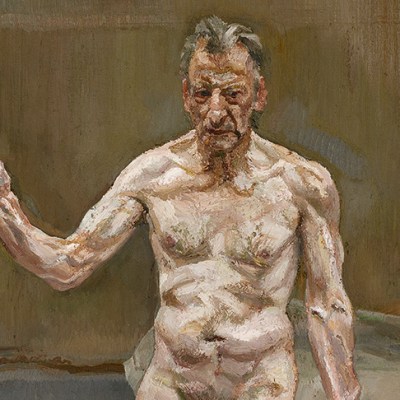Last year I had the pleasure of discussing with Rose Hilton (1931–2019) a phenomenon she understood better than most – that of the artist couple. I was curating an exhibition of nine such couples who had worked in 20th-century Britain. Of those 18 artists, Rose was the only one still living, and while I loved the warmth of her paintings and the sharp creative intelligence at work behind the veils of colour, her story was, in the circumstances, particularly intriguing. This, after all, was a talented female artist – a prize-winning student while at the Royal College of Art – denied the right to work by her husband, Roger Hilton, who insisted there could only be one artist in the family: him.
Rose, it turned out, was sanguine about the past. With wry humour and a clarity that belied her years, she described meeting the firebrand abstract painter in the late 1950s, and recounted highs and lows of a relationship that gave her two sons before coming to an end with Roger’s death in 1975. Listening to her, it became obvious that any anger she felt had long since faded, to be replaced by acceptance of her late husband’s failings mixed with gratitude for the help he eventually gave her. At first, as she explained, she worked clandestinely. ‘“I know you’ve been doing it up there secretly,” he used to say. “I can smell the turps.” I didn’t really take too much notice, and eventually he accepted that I needed to paint and ended up giving me more helpful advice than I ever received at art school. He had tremendously good training in Paris, and he taught me about colour and tone in a way I’d never learned before.’
Rose had already inspired Roger to build the figure into his abstract compositions; now he in turn helped her apply the principles of abstraction to paintings of the figure. In the decade after his death she worked tirelessly, focusing on the nude and gradually honing a vision that combined her skills as a colourist (Matisse and Bonnard were favourite artists) with rigorous composition. In the late 1980s her bold, elegantly structured paintings caught the attention of London dealer David Messum, and Rose’s career took off, culminating in a retrospective at Tate St Ives in 2008.
Seeing the reactions of visitors to the artist couples exhibition (at the Royal West of England Academy) last year, it was clear that Rose’s colour-soaked paintings were a new discovery to most – and a source of delight. In life too she was popular, a woman remembered happily by the many friends who attended sprawling summer parties at her Cornish house on Botallack Moor near Newlyn. Having been raised according to the strict beliefs of the Plymouth Brethren, Rose rebelled in her twenties and enjoyed life with a passion thereafter. Yet it would be a mistake to categorise her simply as fun-loving and her work as charming. Conversation with Rose revealed a woman who had spent a lifetime questioning and challenging herself, and an artist whose determination to improve and willingness to experiment never faltered.
James Russell is an independent art historian and curator, and is compiling the catalogue raisonné of watercolours by Eric Ravilious.





